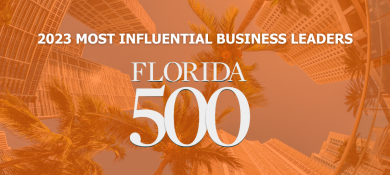National Real Estate Investor, one of the country’s top commercial real estate publications, profiles the University of Miami’s new Life Science & Technology Park. The story provides a good overview of the project, its affiliation with the University of Miami, and the types of opportunities that will be available to tenants, including those from Latin America. The park’s first phase, R&D Building One, will deliver in mid-2011, marking an important step forward in Miami’s emergence as a global destination for life sciences and technology firms. The park is generating interest from research teams throughout Latin America and the Caribbean, as well as entrepreneurial teams in seeking a platform for collaborating with University faculty. Among the features available to these tenants are “Ready-Lab” suites offering turn-key lab space and ‘soft-landing’ facilties for foreign tenants seeking to break into the US market. Here’s the full story, courtest of NREI…
Technology Park Lures Tenants with University Cachet
By Denise Kalette, NREI Managing Editor
Companies from around the world are expected to snap up research and office space to develop new products and hunt for medical breakthroughs at the University of Miami’s new life sciences technology park. Project developer Wexford Miami LLC’s approach to filling the facility serves as a case study in showing how state-of-the-art technology and a savvy marketing plan can attract tenants to a business and research park during the early phase of development.

The University of Miami Life Science & Technology Park will include five buildings providing up to 2 million sq. ft. of office and lab space. The first building, with 252,000 sq. ft., was topped off in mid-September, and the interior work is underway. The design calls for wet and dry labs, and ready-to-lease lab suites. The projected completion date is mid-2011. Among the projects earliest tenants is the University of Miami Tissue Bank, whose research could benefit patients with bone tumors or spinal injuries, as well as athletes suffering from a variety of sports injuries. The tissue bank, working with the stem cell institute, will have space to pursue advances in regenerative technology. “When it comes to the University of Miami’s presence, the goal is to have that act as a magnet for other companies and research teams that are looking to collaborate with faculty and feed off the resources that a major research institution brings to the table,” says Aaron Gordon, vice president at Schwartz Media Strategies, a spokesman for the project. “If you’re an entrepreneurial research team and you want to get discovered, you enhance your chances by having an affiliation with a university.” Construction for the first building is expected to be completed in mid-2011. “A company from Latin America, say Brazil, could come to Miami and set up shop here with a laptop and whatever they need to do their work, and then they can get going. They don’t have to build out a new lab, which can be expensive,” explains Gordon. The first building is 40% preleased. Construction will begin on the second structure when the first is 75% or 80% leased. The University of Miami has rented 80,000 sq. ft., and a new tenant for 15,000 sq. ft. in the first structure will be announced this week. The technology park is predominantly funded with private capital, and is being developed by Wexford in partnership with the University of Miami. Hurricane resistance, emergency power Because of its hurricane-prone Miami location, the technology center will be bolstered with a hurricane-resistant design, along with emergency power to keep critical functions running in case of a power outage. Other features include:
• Strengthened floors, able to bear 100 pounds per square foot, compared with 50 pounds per square foot in a typical office building.
• Elevators also will be capable of handling greater weight to enable the transport of lab equipment and other large objects.
• Electrical capacity per tenant is greater than in a typical office building to accommodate high-powered lab equipment.
• The air-conditioning system is designed to offset heat generated by the lab equipment.
Phase two of the development will feature a “Rain Garden” where tenants can interact indoors and outdoors.

Gateway to the Southeast The developer envisions the park as a gateway to the U.S., and particularly, the Southeast. Wexford Science & Technology LLC, the Maryland-based parent company of Wexford Miami LLC, partnered with universities in Baltimore, Philadelphia, Chicago and other cities in developing similar research parks. Miami’s development will be located in the city’s health district, where the University of Miami Miller School of Medicine and six hospitals are located. Proximity to the university and the health district will “open the door to new opportunities in the Southeast U.S. and the Americas,” said Joseph Reagan Jr. of Wexford Miami, in a statement. The research facilities are expected to draw particular interest from Latin America. Researchers from the region will be paired with faculty or lab professionals who speak their language and are familiar with their culture, adds Gordon. “The first building is going house ready-lab suites for entrepreneurial companies that come in. They might not have the infrastructure or the resources that larger global companies have. They might be coming here from Latin America, and they want to break into the U.S. market. This is their soft landing pad.”








 See More Blogs
See More Blogs
Comments